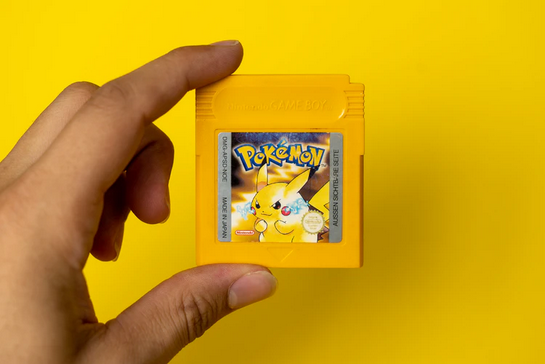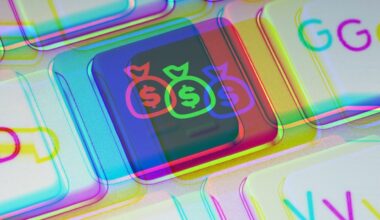If you’ve come across Pokemon NFT, you would probably wonder what this is all about. We all know of the popular video game that involves characters that have engaged us over the years in the traditional Pokemon games. You may also be aware that these games evolved to entail collection of rare cards. Some of these are so valuable that collectors actively hunt for them.
We have entered the era of digital collectibles. This in essence means that it is now possible for people to pursue their passion as collectors by accumulating digital items in any field that they have interest in, such as arts.
We are talking about this subject because such collections are no longer restricted to physical objects but digital collectibles that could be representative of the physical asset. This is one of the results of the tokenization property that is possible with blockchain technology.

In essence, a work of art can be converted into digital art that is representative of the physical artwork asset. Tokenization of a non fungible token makes it possible that the art features unique properties that makes it impossible to be like any other artwork in existence, even digitally.
Smart contract chains such as the Ethereum built ERC-721 and Binance’s smart chain, BEP-20 are essentially tokenization platforms that can be used to build non fungible tokens.
When items are tokenized on such platforms, what has happened is that they have been signed into the blockchain in a manner that they are stamped with a unique signature. The implication of this is that this registration on the blockchain cannot be altered.
Why NFT?
The interest people have in NFTs is due to the fact that these are digital collectibles that have uniqueness mainly due to the fact that each asset is non exchangeable with another. By being non exchangeable, what is meant is that one NFT is different from another unlike fiat bills that are exactly the same if they’re of the same value.
For example, a $10 bill can be exchanged for another $10 since they’re exactly the same and of equal value. For a non fungible asset, each asset has its own uniqueness, signature and value, so one cannot be swapped for another in terms of identicality.
The non fungible feature means that a holder of the token owns an asset that no other person has, possibly in terms of features and value. Granted, there may be similarities in the features of two tokens but the fact that they are NFTs means that they are not exactly the same.
One token being not exactly as another means that they are not interchangeable. So what makes NFTs peculiar is their uniqueness. The transparency of the blockchain also makes it easy for everyone interested to know the authenticity of a particular NFT or even who owns it. These and many other features such as the security of the platform (blockchain) make non fungible tokens desirable.
This idea is what Pokemon NFT promotes with blockchain because the technology promotes trust and transparency, security and immutability. It practically eliminates the need for third-party involvement in activities such as gaming and finance.
In other words, digital collectibles can be accessed, bought, stored and sold without the involvement of commission-seeking brokers and auctioneers without compromising the authenticity of the collectible.
Pokemon NFTs imitate the concept of pokemon, the generational video game that became popular due to its interesting role playing gaming feature, iconic characters and engaging storylines.
A Virtual Real Estate
The buzz around non fungible tokens (NFTs) stems from what they represent – a revolutionary concept that is a reflection of virtual real estates. This is why NFT platforms have seamlessly adapted to the concept of sales of these estates that have proven to represent values that people are willing to pay for.
We have seen projects that sell tokenized real-world valuables such as land and artworks. As more people realize that these virtual non fungible digital assets can represent real world values that collectors desire, the value and demand for these NFTs will continue to appreciate.
An avid collector of digital art can conveniently migrate to NFTs or even invest in both digital and physical assets depending on their interest and orientation. What is obvious is that the value placed on both types of assets is dependent on their market demands.
Seamless Access To Items
Investing in valuable Pokemon cards has some setbacks that could make it time-consuming and laborious. The collector would have to order for the cards, make payments and then have them shipped to their location. They’ll also be concerned with storing the cards safely.
All these concerns are eliminated through tokenization of Pokemon cards as non fungible tokens (NFTs). Since they’re bought, sold, transferred and saved on the blockchain, it is a safer and more convenient method of collection for the collector.
Of course Pokemon NFT has its setback, mainly being that the collector won’t be able to show off physical cards to their friends. However, there are options available for them to order physical cards whenever they so desire in exchange for the tokenized versions. Marketplaces such as has been made available by projects such as Pokechain and Digible work well in accomplishing this.
Pokemon Background
Blockchain has made it possible to tokenize most items that people like to collect and keep. It is possible to deploy this technology in situations such as documents verification, and certification. Also, collectibles such as gift cards and rare game cards can be signed into the blockchain essentially making them unique digital items.
With this possibility, a collector could order an NFT such as rare cards and have them delivered as non fungible tokens after the asset has been tokenized. But what is the origin of the Pokemon game?
In reality, this video game originated from Japan in 1996 when Satoshi Tagiri created it with Ken Sugimori. The game was published by Nintendo with Game Freak as the developer behind it. The game has since spread outside Japan, owing its success partly to the role playing games (RPGs) function.
Since the initial release of the premier version called Pocket Monsters Red And Green, the game maker has released a series of generational games. The latest version titled Pokemon Sword And Shield has held sway since November 15, 2019 when it was released globally. The company is poised to release the next series in the Q4 of 2021 and yet another by 2022.
What is Pokemon NFT?
The demand for NFTs makes it expedient to have a decentralized market where anyone can assess any type of non fungible token. Such a marketplace should have affinity to a public chain on which these NFTs are minted and on which users can access transactional data regarding such assets. This is what Pokemon NFT platforms such as Pokechain strives to accomplish in the NFT market.
It is a decentralized marketplace for virtual assets that are essentially non fungible tokens. Its dual chain structure ensures the production of such in-demand tokens. It also comprises a trading platform that furthers the exchange of various kinds of NFTs. Its public chain ensures the minting of NFTs, its second chain is effectively a peer-to-peer trading website. Users can upload, trade and buy assets using the platform.
It is an example of the many possibilities inherent in fungibility despite the fact that it is an old concept. New developmental paths as seen with digital pokemon card collectibles show that its application is not limited to video games, finance and the like. In terms of non fungibility, Pokemon NFT is applying the principles of digital collectibles to real world needs such as documentation and titles or deeds of ownership.
Features of The Pokemon NFT
Understanding that Pokemon NFT is a revolution would help you appreciate the buzz around the concept. Several projects are being built around the idea of non fungible collectibles. If we take a cue from one of such initiatives such as Pokechain, we would gain greater insight into what features that users can access in Pokemon NFT ecosystems.
Anti-Whale Tokenomics
The dominance of whales is a known factor in the coin market. These are holders of a very high volume of coins that can influence the market albeit temporarily. It is also a fact that a network of whales could have the capacity to flood the market in a dump and crash the price of coins, especially low cap digital assets.
This market manipulation ability is not desirable since this class of investors can take advantage of their influence and profit highly even at the expense of others. This is why a Pokemon NFT platform such as Pokechain has built-in anti whale factor.
This engenders trust and gives the community the confidence that high net worth entities would not influence the direction of digital NFTs in the marketplace. This mechanism ensures market orders greater than 0.1% of the total circulating supply are not honored. The community assets are hereby protected and transparency is maintained.
Cross-Chain Functionality
In some Pokemon NFT platforms such as the one proposed by Pokechain, a cross chain functionality makes it possible for holders of the POKE coin (internal currency of Pokechain) within the Pokechain platform to benefit from inter chain interaction.
For instance, all holders of POKE would benefit from transactions made on Pancakeswap. This residual stagnant income is based on the interaction of the Pokechain smart chain with the Binance Smart Chain. The cross chain functionality is also responsible for wallet distribution of BNB to holders of the POKE coin based on the volume of assets they own.
Transparency
Even though a traditional feature of the distributed ledger technology (DLT), transparency is still an important feature of Pokemon NFT platforms. This feature enables users to ascertain the authenticity of the non-fungible token they are interested in. Data such as the time-stamp that proves the minting period of a token can be used to authenticate its integrity or even track its history.
Peer-To-Peer Execution
Another blockchain feature that makes Pokemon NFT platforms a delight is the ability to facilitate peer-to-peer transactions within the ecosystem. In essence, a trader can deal directly with a buyer using the decentralized exchange. This is desirable because it reduces the cost of transactions since intermediaries are mostly excluded.
Collectibles Backed By Real Assets
The Pokemon NFT sphere is diverse. This is exemplified in the various approaches used by teams in cornering different aspects of the token market. Different teams have their own concepts and market that they seek to enter. Digible for instance offers NFTs as collectibles that are backed by real physical assets.
These physical assets are not arbitrary, but real assets that have been tokenized and offered as alternatives to the real-world asset. This makes it possible for collectors to focus on the digital assets that actually exist in the real world. For instance, a high value Pokemon card can be stored on the blockchain after it has been tokenized.
The buyer or collector would only need to have access to the private key that gives them access to the digital card and wouldn’t have to worry about losing a physical card. They just have to make sure that their private key is secure. With it they can access their digital pokemon card whenever they want.
Assets Tokenization
Of course, this is the basis for Pokemon NFT or any other effort or program that aims to place value on the blockchain. All Pokemon NFT projects entail tokenization of valuable assets that have the potential of solving the needs of people.
Implication of Pokemon NFT
Daniel Pustelnik, who is a co-founder at Digible stated during a recent AMA that NFTs are mainly like ticket slips that the owner of an item is given after they have made a deposit of some valuables. The slip gives them access to the item whenever they need to redeem it.
The versatility of NFTs is responsible for the growing interest in them. The fact that they can be backed by real assets but do not have fixed value like stablecoins make them desirable as a collector’s option. This is because just like real estate, the asset value will likely appreciate over time giving the holder more worth for their investment.



